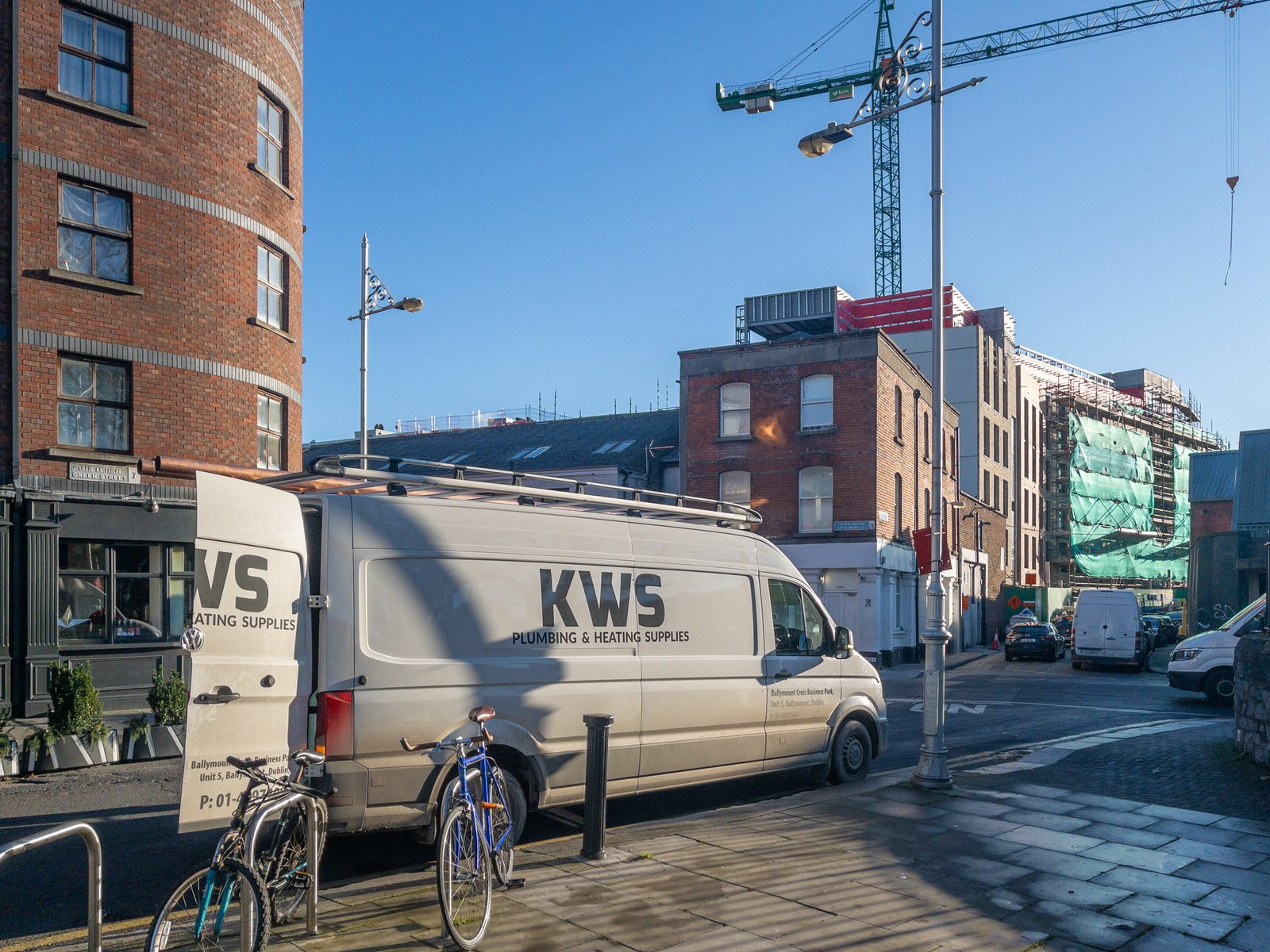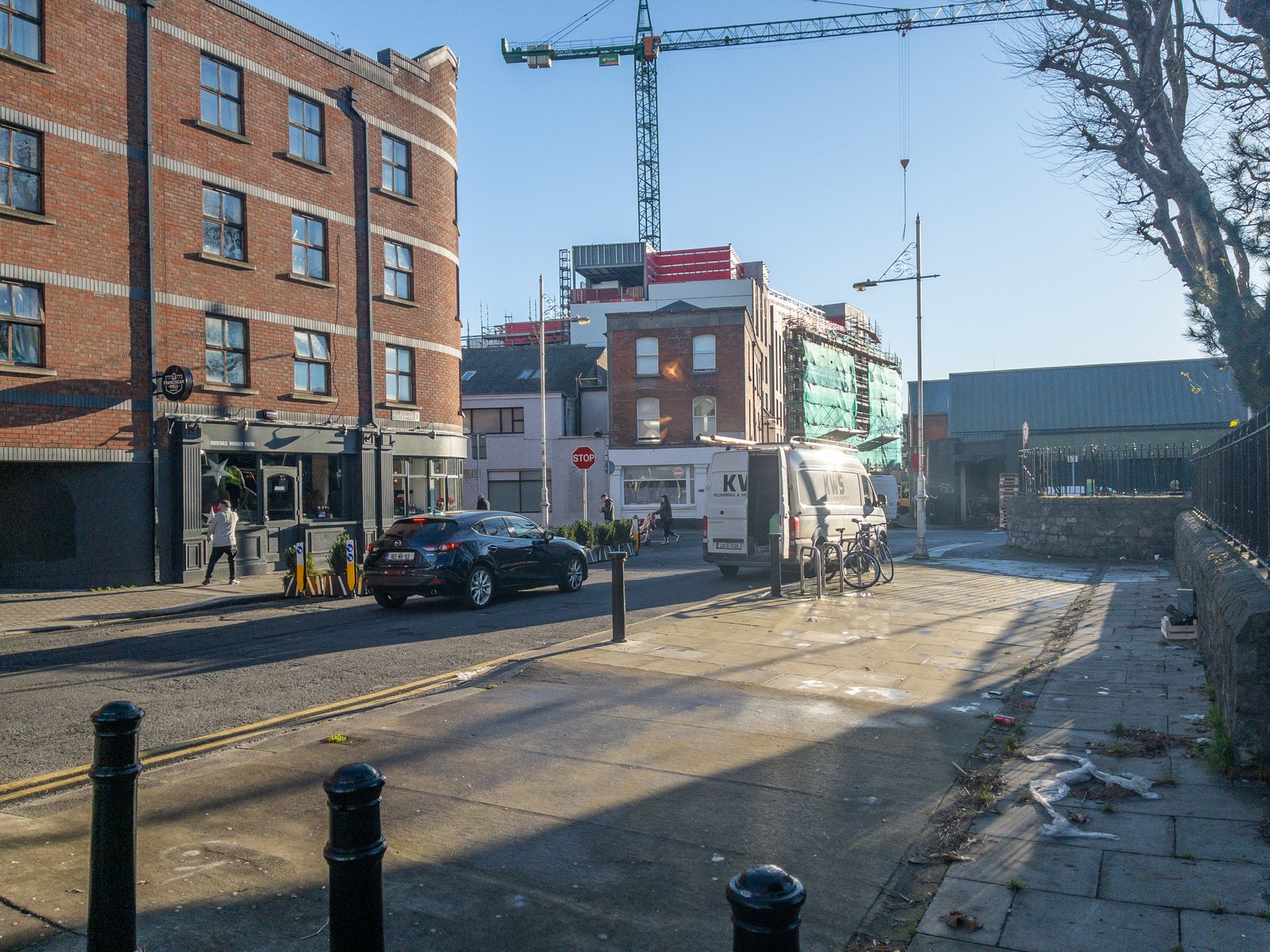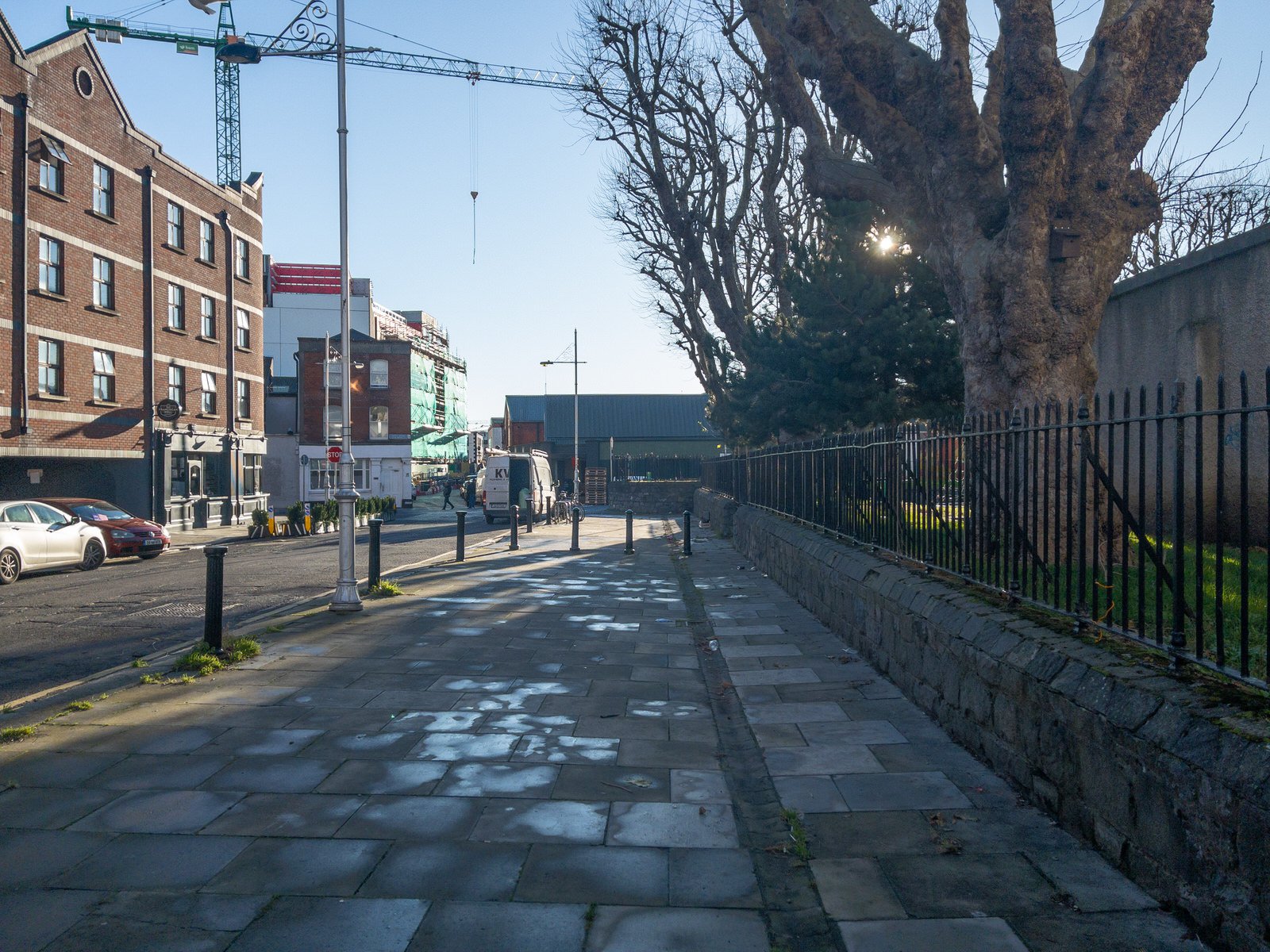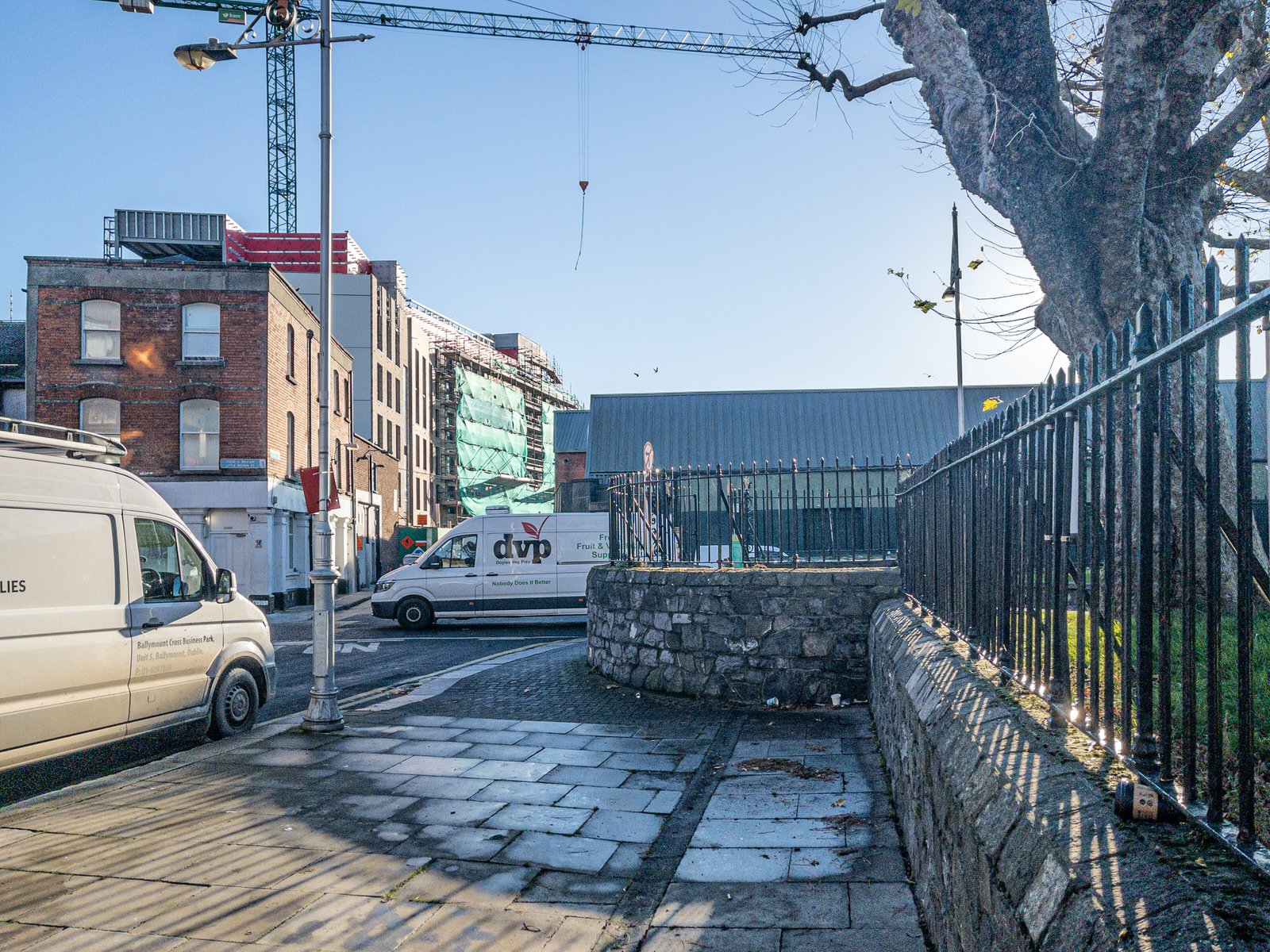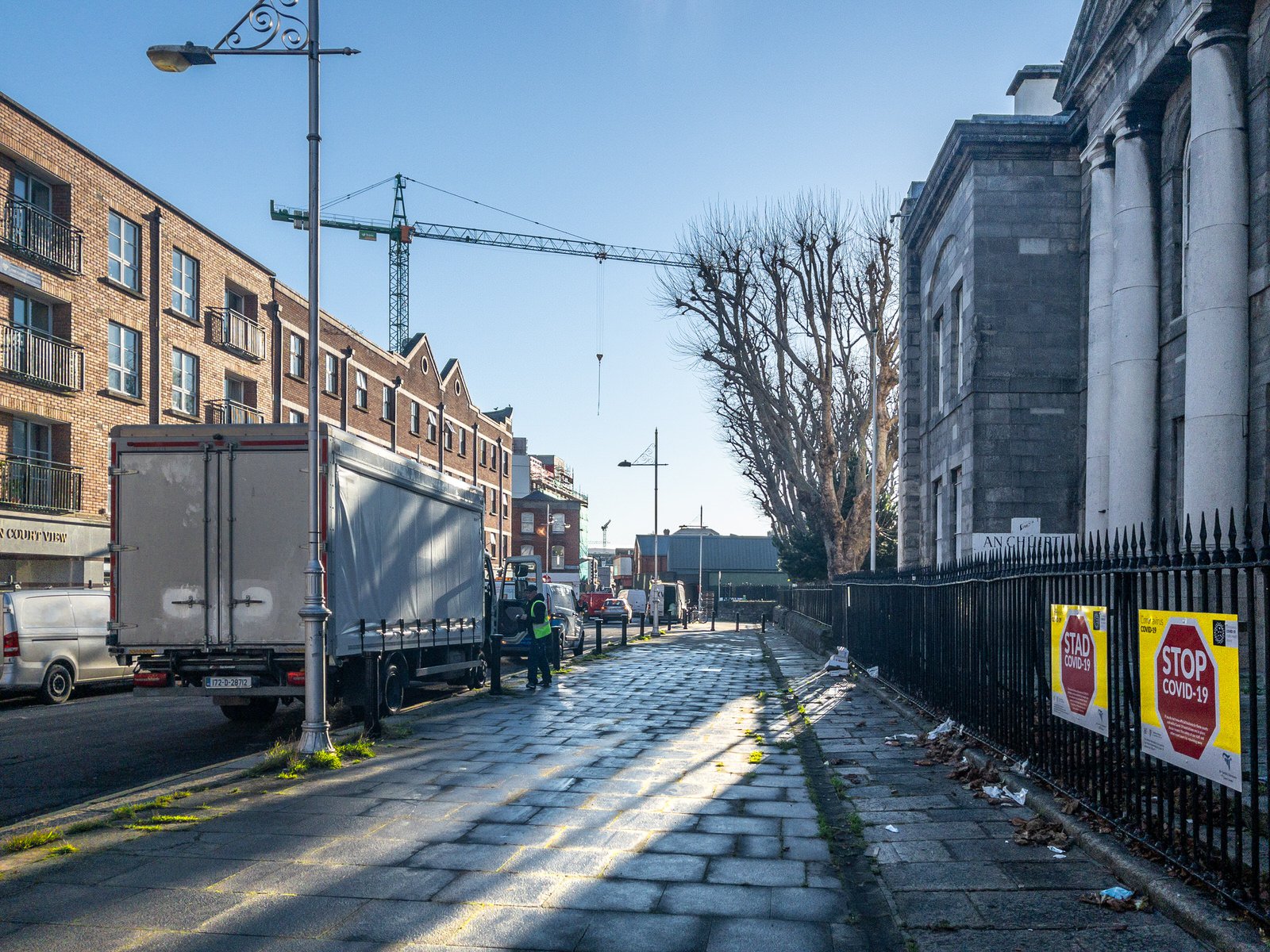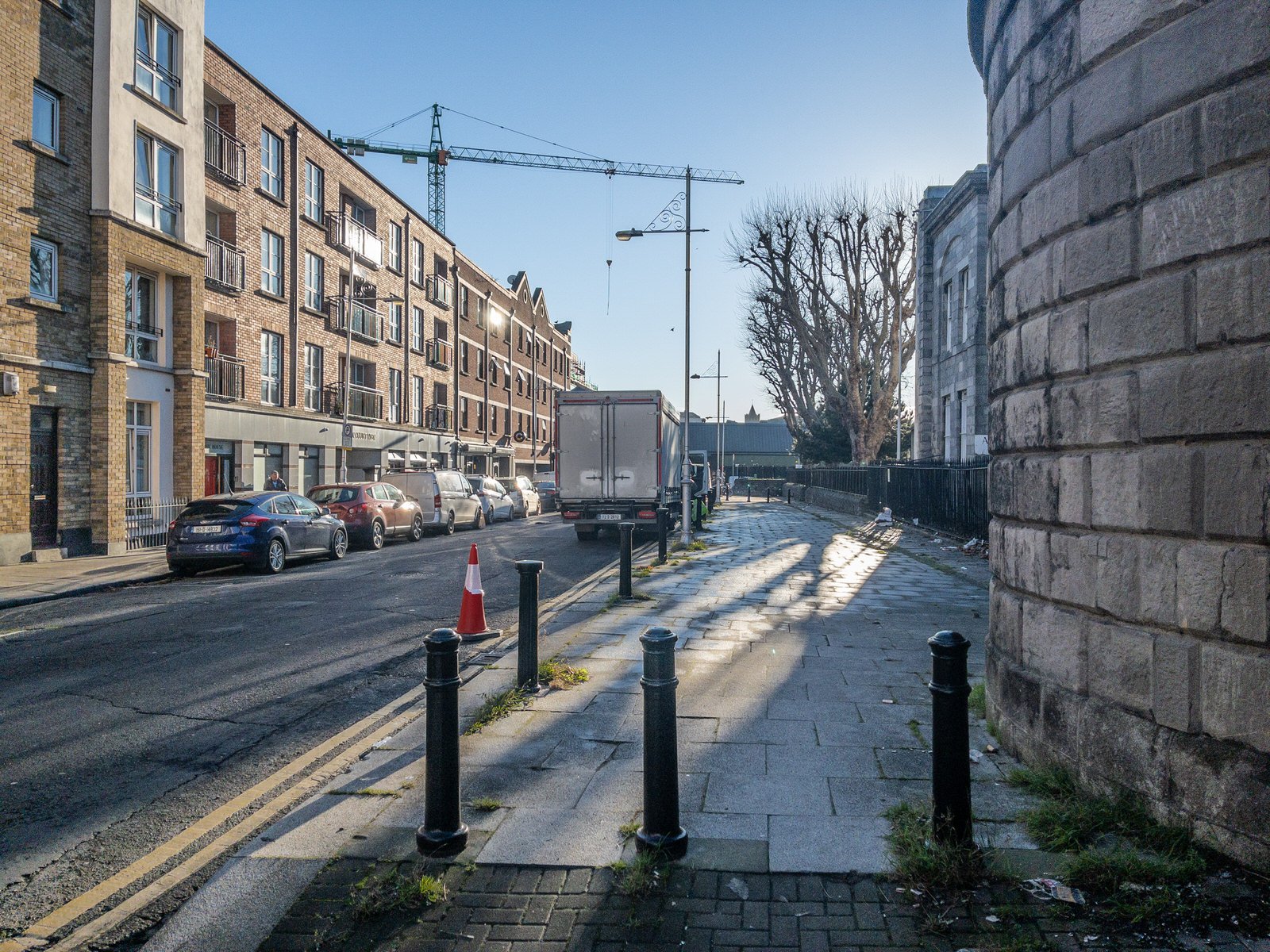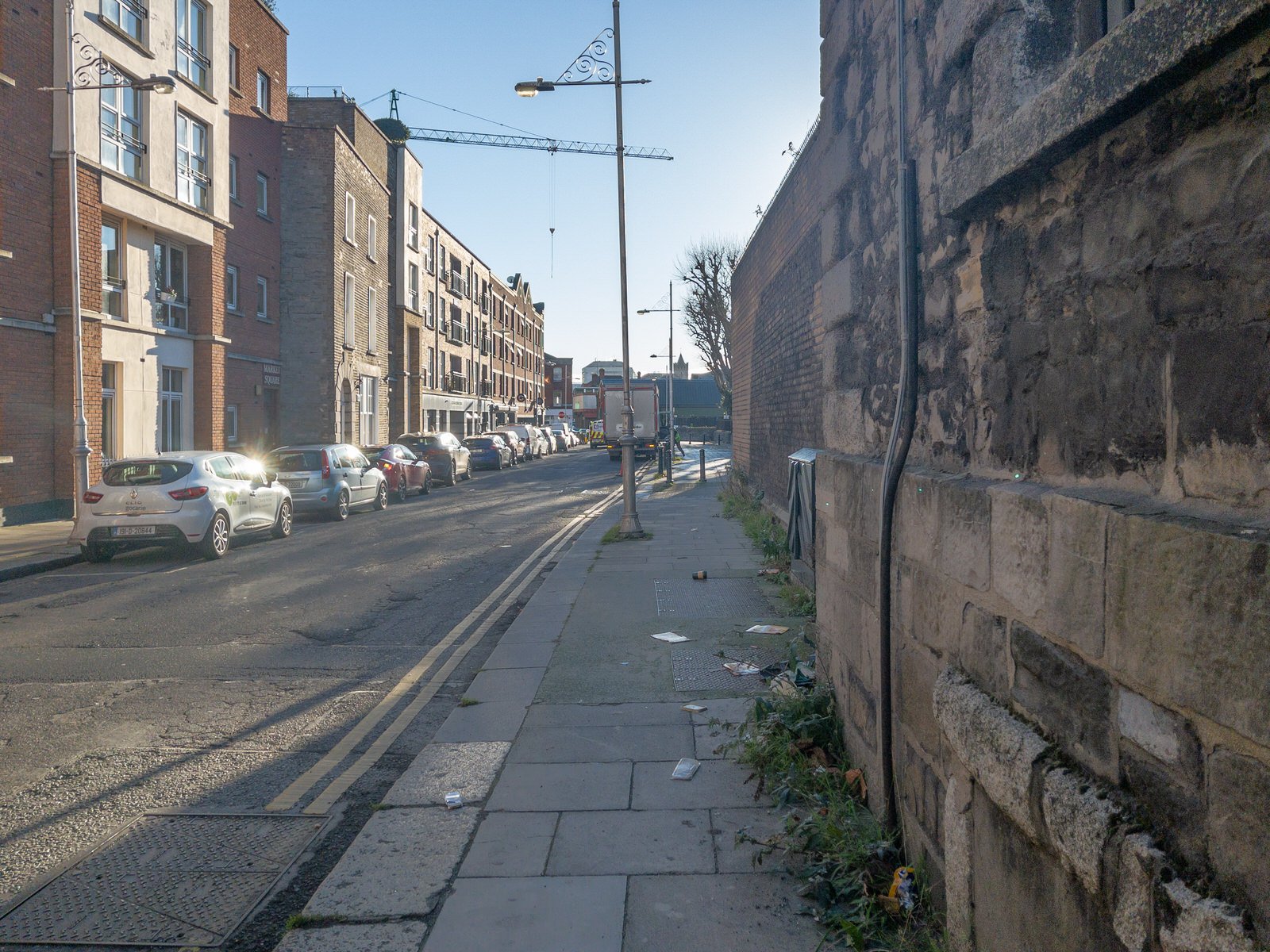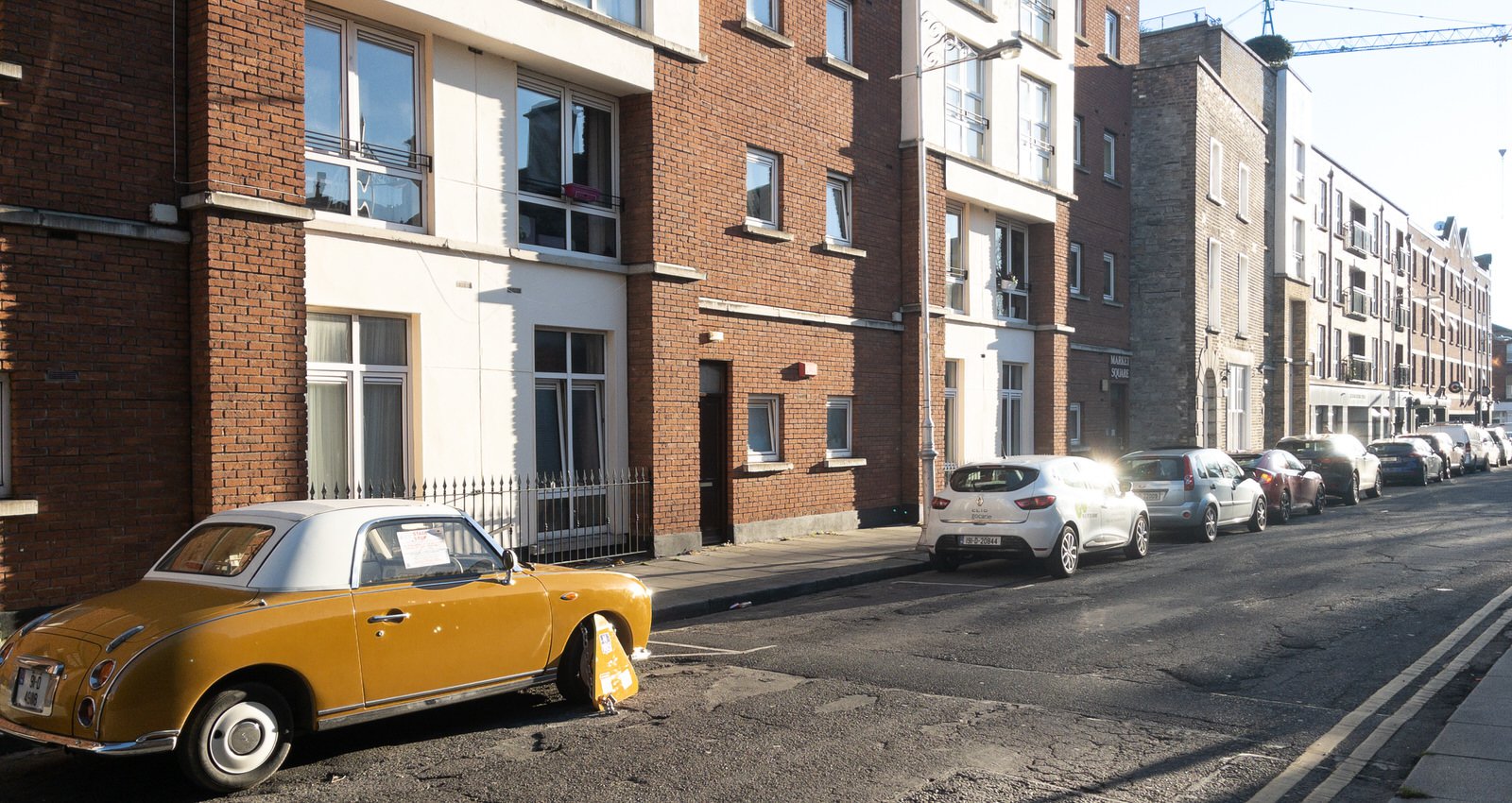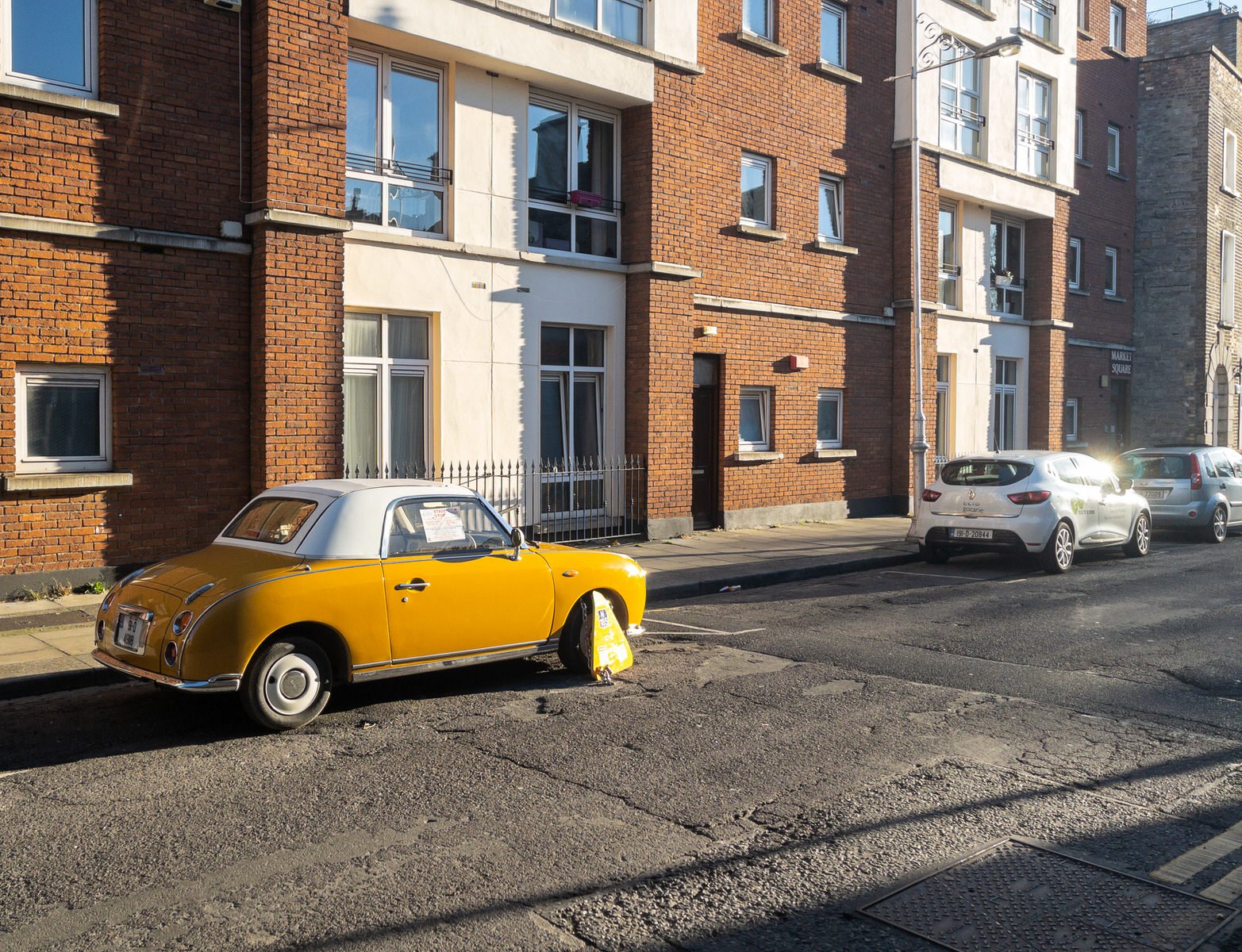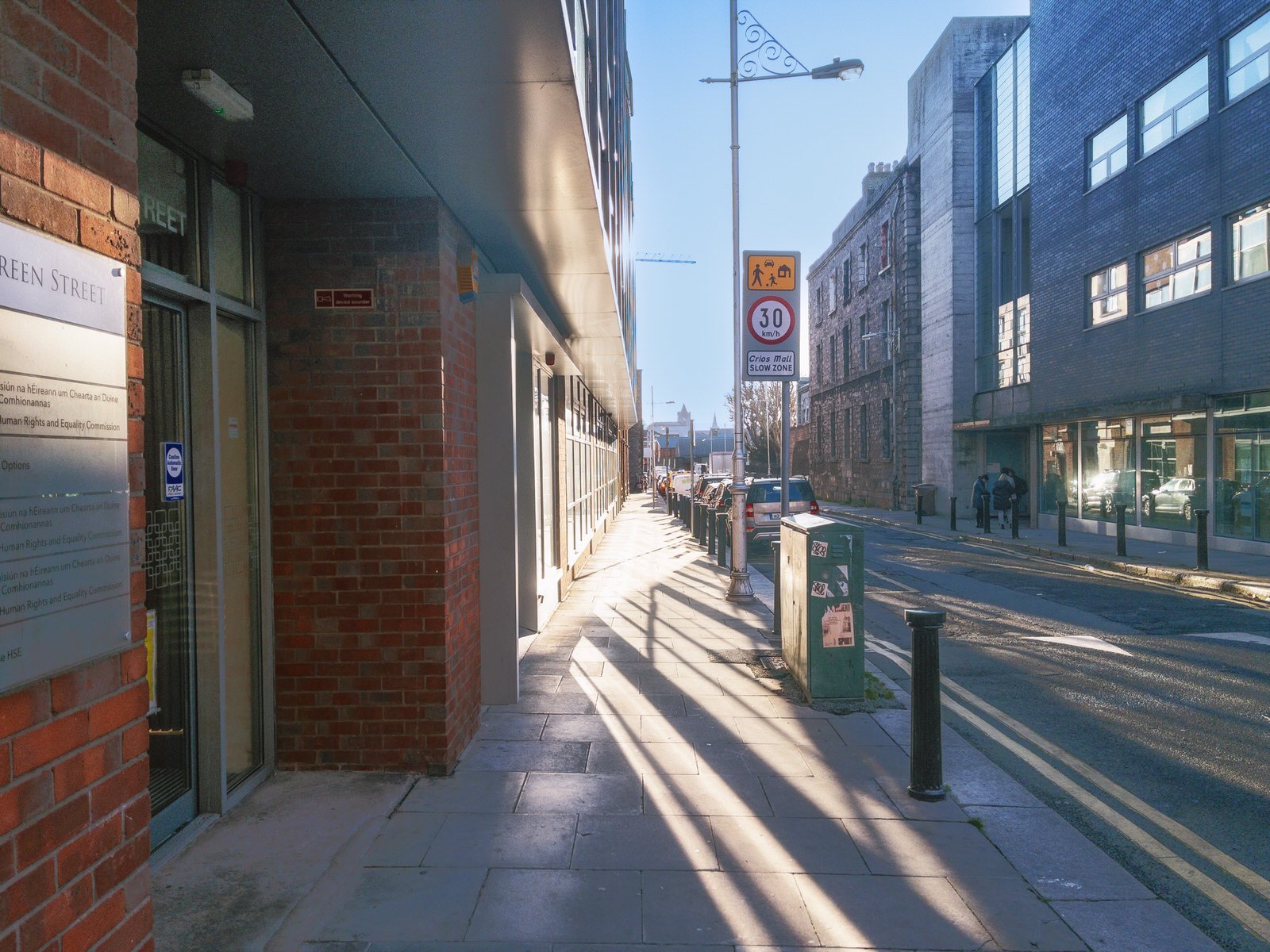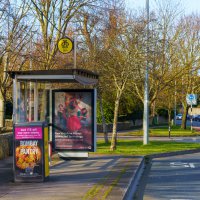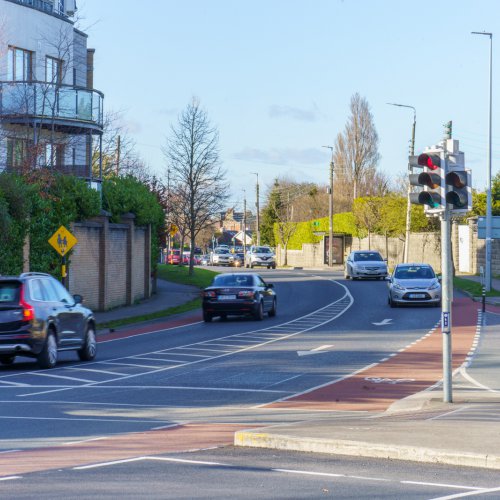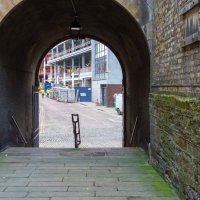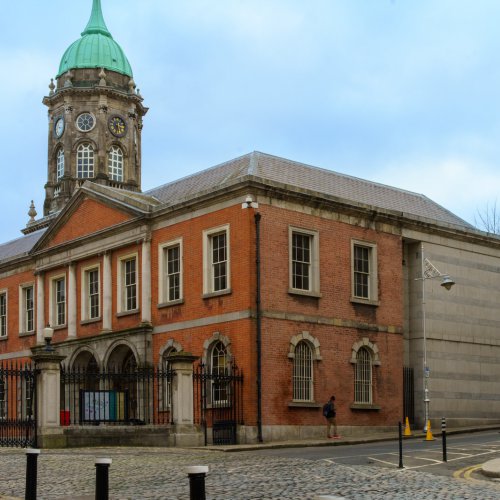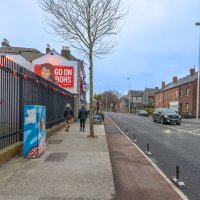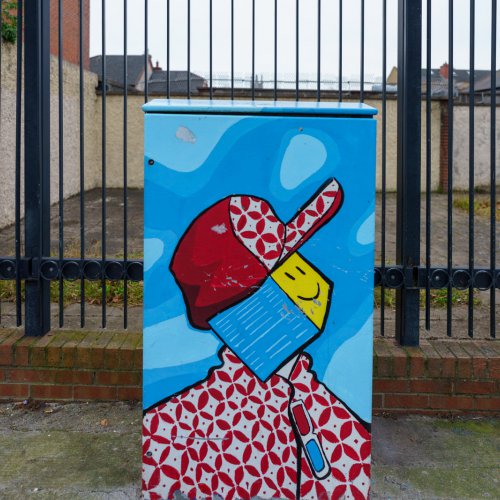the site of many widely discussed criminal trials from 1797 until 2010, when the Criminal Courts of Justice building opened.
The building held different courts, including the Dublin Commission Court (for the city and county, similar to the assizes held in other Irish counties), the city quarter sessions, and the courts of the Lord Mayor, the Sheriff, and the Recorder. The courthouse was part of a complex which also included three prisons — Newgate (completed 1781), the Sheriff's Prison (completed 1794), and the City Marshalsea (completed 1804) — and the Governor of Newgate's residence.
The Newgate prison replaced the original county gaol of the county of the city of Dublin, which was located at the New Gate of the city wall. Which prison a convict or remanded defendant stayed in depended on the court and crime; besides those on Green Street there was Richmond Bridewell south of the Liffey,[5] and Kilmainham Gaol west of the city took prisoners from the County Commission Court. (Kilmainham Courthouse held the county quarter sessions).
Because the courthouse held Commission Courts for both County Dublin and the county of the city, it was legally treated as part of both counties. Green Street Courthouse was the venue of trials of noted Irish republican rebels, including Robert Emmet in 1803, John Mitchel in 1848, and Fenian leaders later. As well as holding trials, the Sessions House was the venue for election of members of the UK parliament for the Dublin City constituency.
